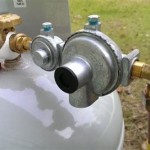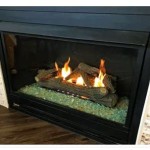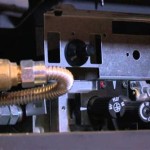New Construction Fireplace Inserts: A Comprehensive Guide
A fireplace can be a stunning focal point in any home, adding warmth, ambiance, and aesthetic appeal. For new construction projects, incorporating a fireplace insert offers numerous advantages over traditional fireplaces. These inserts are specifically designed for integration during the building process, providing enhanced efficiency, safety, and customization options. This article will delve into the world of new construction fireplace inserts, exploring their benefits, types, and considerations for successful installation.
Benefits of New Construction Fireplace Inserts
New construction fireplace inserts offer distinct advantages over traditional fireplaces, making them an attractive choice for homeowners building a new home. Here are some key benefits:
- Increased Efficiency: Fireplace inserts are designed to maximize heat output and minimize energy loss. They feature tight-fitting doors and efficient combustion systems, resulting in greater heating efficiency compared to open fireplaces. This translates into lower heating costs and a smaller carbon footprint.
- Improved Safety: Fireplace inserts are built with safety in mind, incorporating features such as spark screens, tempered glass doors, and built-in heat shields. These safety measures significantly reduce the risk of fire hazards, making them suitable for families with young children or pets.
- Enhanced Aesthetics: Fireplace inserts come in a wide range of styles and finishes, allowing homeowners to seamlessly integrate them into any design aesthetic. From modern to traditional, there are inserts to complement any fireplace surround or décor.
- Versatile Fuel Options: Depending on the type of insert chosen, homeowners can enjoy the warmth of wood, gas, or even pellets. Gas inserts provide convenience and ease of use, while wood inserts offer a traditional and rustic charm.
Types of New Construction Fireplace Inserts
New construction fireplace inserts are available in various types, each with its own characteristics and advantages.
- Gas Inserts: Gas inserts utilize natural gas or propane as fuel, providing a clean and efficient heat source. They are known for their convenience, as they can be easily ignited with a switch and require minimal maintenance. Gas inserts also offer a range of flame patterns and heat outputs to suit individual preferences.
- Wood Inserts: Wood inserts rely on burning wood for heat, offering a traditional and cozy fireplace experience. They provide a realistic flame and a pleasant aroma, but require regular cleaning and maintenance. Wood inserts are generally more affordable than gas inserts but require a readily available supply of firewood.
- Pellet Inserts: Pellet inserts are a relatively new and energy-efficient option. They burn compressed wood pellets, providing consistent heat output with minimal effort. Pellet inserts are known for their clean-burning properties and automatic feeding systems, making them a convenient choice.
Considerations for New Construction Fireplace Inserts
When choosing a new construction fireplace insert, several factors need to be considered to ensure proper installation and optimal performance.
- Fireplace Size and Dimensions: The fireplace insert needs to fit seamlessly into the existing fireplace opening. It's crucial to measure the fireplace dimensions accurately and select an insert with compatible size and shape.
- Heating Requirements: Consider the size of the room or area you aim to heat and select an insert with a suitable heat output. A trained professional can help determine the appropriate size for your needs.
- Fuel Type: Decide on the fuel type that best suits your preferences, budget, and availability. Gas, wood, and pellet inserts each have unique advantages and considerations.
- Chimney Requirements: Make sure your chimney is properly sized and lined to accommodate the chosen insert. Gas inserts may require venting directly to the exterior, while wood and pellet inserts typically utilize the existing chimney.
- Installation Costs: New construction fireplace insert installation involves professional labor and potentially additional materials. It's crucial to factor in these costs when planning your budget.
- Maintenance: Different insert types require varying levels of maintenance. Research the specific requirements for your chosen model to ensure you are prepared for ongoing upkeep.
By carefully considering these factors, you can select a new construction fireplace insert that meets your needs and enhances the comfort and beauty of your new home.

Wood Burning Fireplace In New Construction Portland

New House Update Plumbing Hvac Electrical And Fireplace Wildfire Interiors

New Wood Burning Prefab Fireplaces Complete Fireplace Installs

Fireplace Inserts Explained Typical Sizing Functionality More

Fireplace To Gas Burning Insert Remodel Auburn Home Energy Center

All About Prefabricated Fireplaces Chimney Savers

Rais 60 Insert Wood Fireplace For

Fireplace Insert Vs Zero Clearance Maple Mtn

We Install Fireplaces Inserts And Stoves Top Fireplace Brands

Fireplace Inserts Butler Pa Martin S And Service
Related Posts








